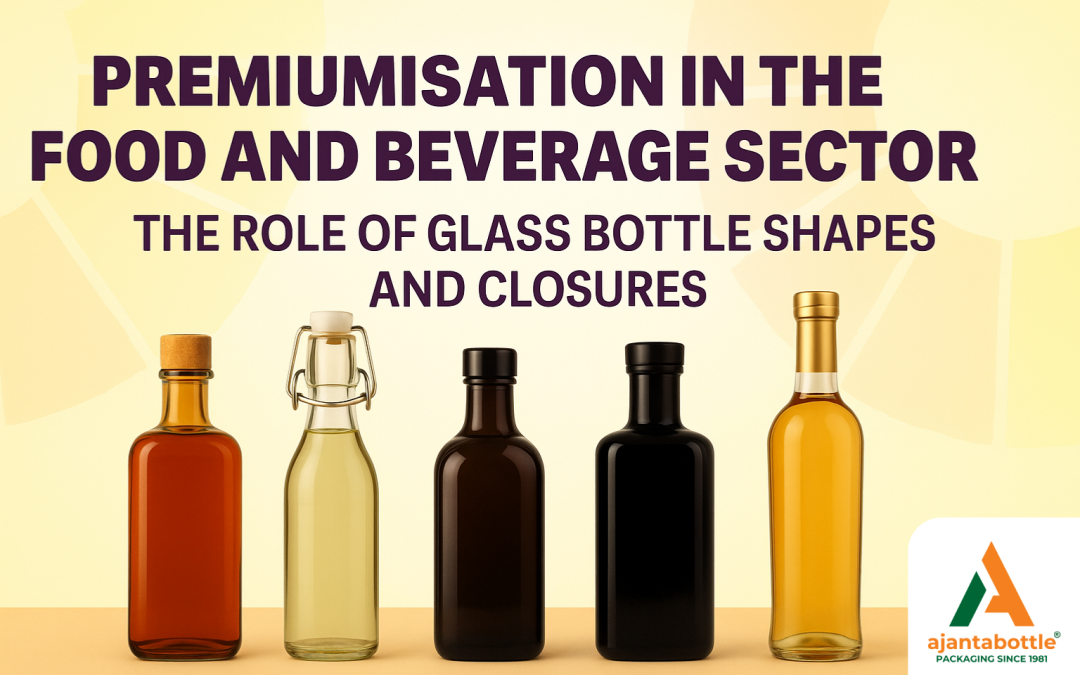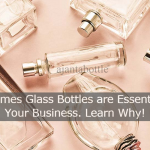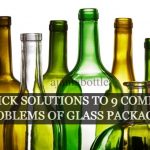The food and beverage industry has undergone a strategic shift. And it’s no longer just about taste, or pricing, or market impetus…It is the time of premiumisation. The age is when customers opt for an elevated product experience, combined with brand storytelling and differentiation in visual appeal.
Such competition makes glass bottles and well-designed closures not secondary packaging materials. They have become potent means to influence the perception of consumers and brand loyalty, as well as improve the process of food and beverage service. In this blog, we take a look at how premiumisation is changing the industry and why packaging and bottle shapes, in particular glass bottle closures, are becoming central to the change.
The Rise of Premiumisation in the Food and Beverage Industry
Amidst a growing consumer demand for authenticity, concern for health, and sustainability premiumisation within the food and beverage sector is on the rise. Its shoppers today don’t just buy goods, they buy into values, aesthetics, and brand stories.
- Small-batch gin, cold-pressed juices, and the like are turning up their noses at their bottles, now simple and well-designed, perhaps in glass; they consider anything prissy to be in bad taste.
- Artisan sauces, condiments, and oils are being given a premium push through custom jars and unique closures.
- The food and beverage service market, comprising cafes and restaurants, is at the forefront of the trend, using aesthetic packaging to spice up cafe and dine-out orders.
According to Mintel (2025), 72% of consumers associate premium packaging with better quality, and 58% are willing to pay more if the packaging looks more luxurious and sustainable.
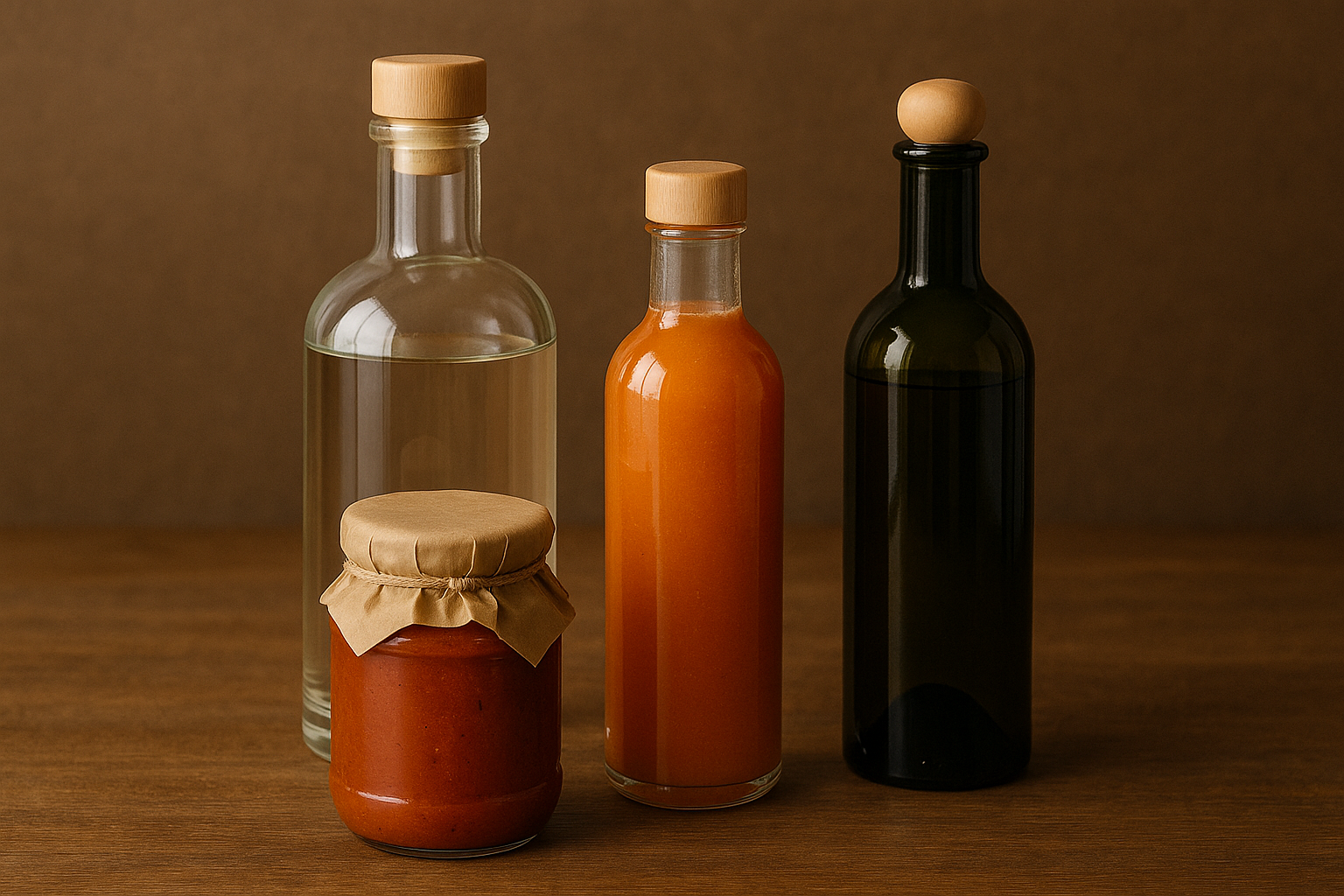
Why Glass Bottles Are the Backbone of Premiumisation
Glass bottles are widely associated with the prestige quality positioning that is demanded in the food and beverages industry for some reasons:
- Purity: Glass does not leach potentially harmful chemicals into food products as plastic can.
- Transparent: You could see what’s in the production line without opening it. It’s very trustworthy and looks good.
- Weight and feel: The weight of glass feels substantial and luxurious.
- Sustainability: Glass is 100% recyclable and can be repeatedly recycled with no loss in quality or purity, a big concern for eco-conscious customers.
Case Study: Fever-Tree
Fever-Tree disrupted the mixer category when it matched its high-end tonic with chic glassware. The long, slim neck and tailor-made specialty embossment with gold-capping closures instantly conveyed premier distinction.
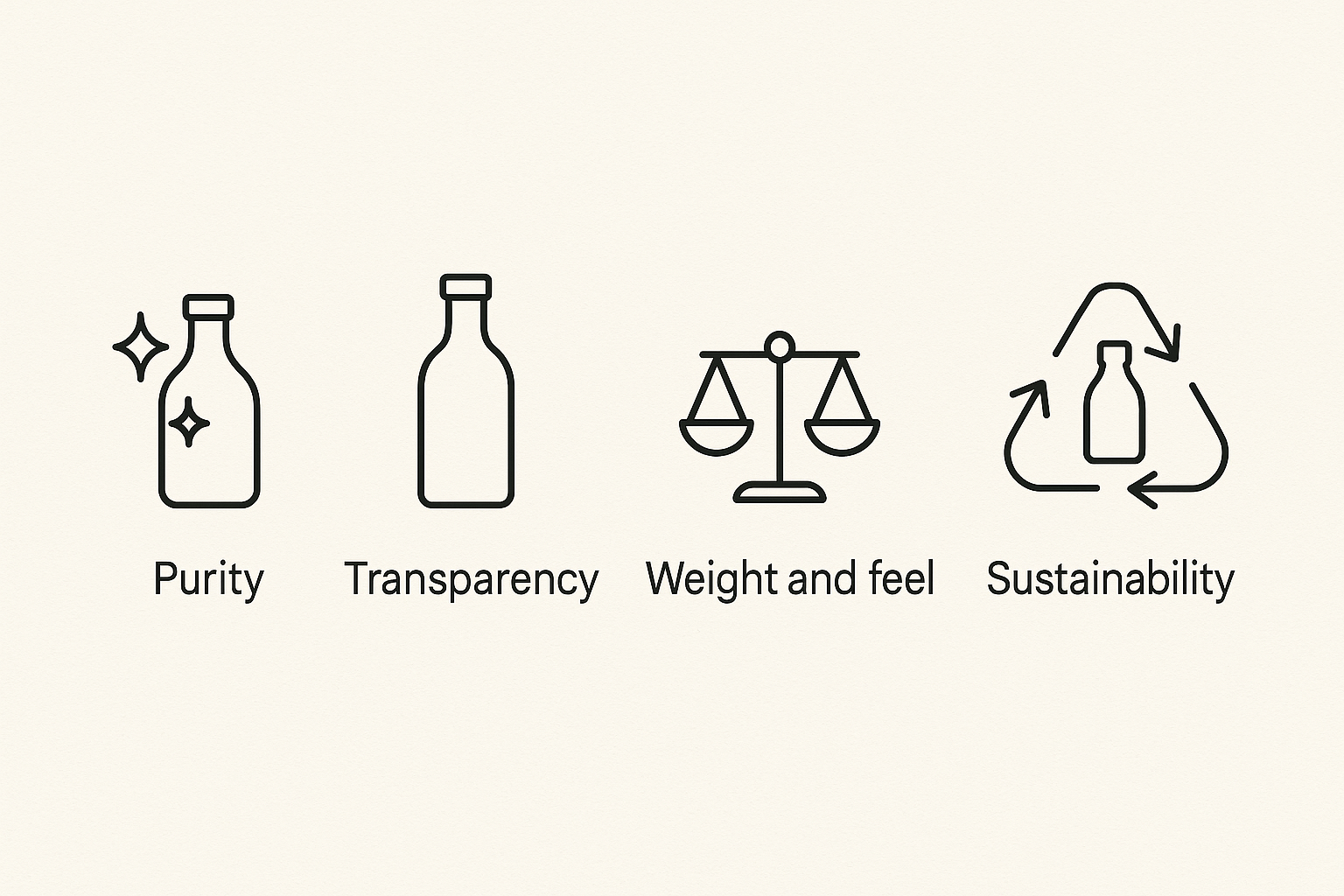
The Power of Bottle Shape in the Food and Beverage Sector
In the food and beverage space, the shape of the glass bottle is a language unto itself. So much more than just a box for a product, it is a vessel that conveys emotion, intention, and identity. They might not do it consciously, but the silhouette of a bottle has everything to do with how a consumer would come to regard a product as to quality and personality.
Different contours evoke specific emotions and associations:
- Tall and slender bottles suggest elegance and refinement.
- Short, wide-mouthed bottles convey rustic charm or artisanal authenticity.
- Embossed, square-sided jars signal heritage and luxury.
- Rounded shoulders and short necks create a perception of vintage craftsmanship.
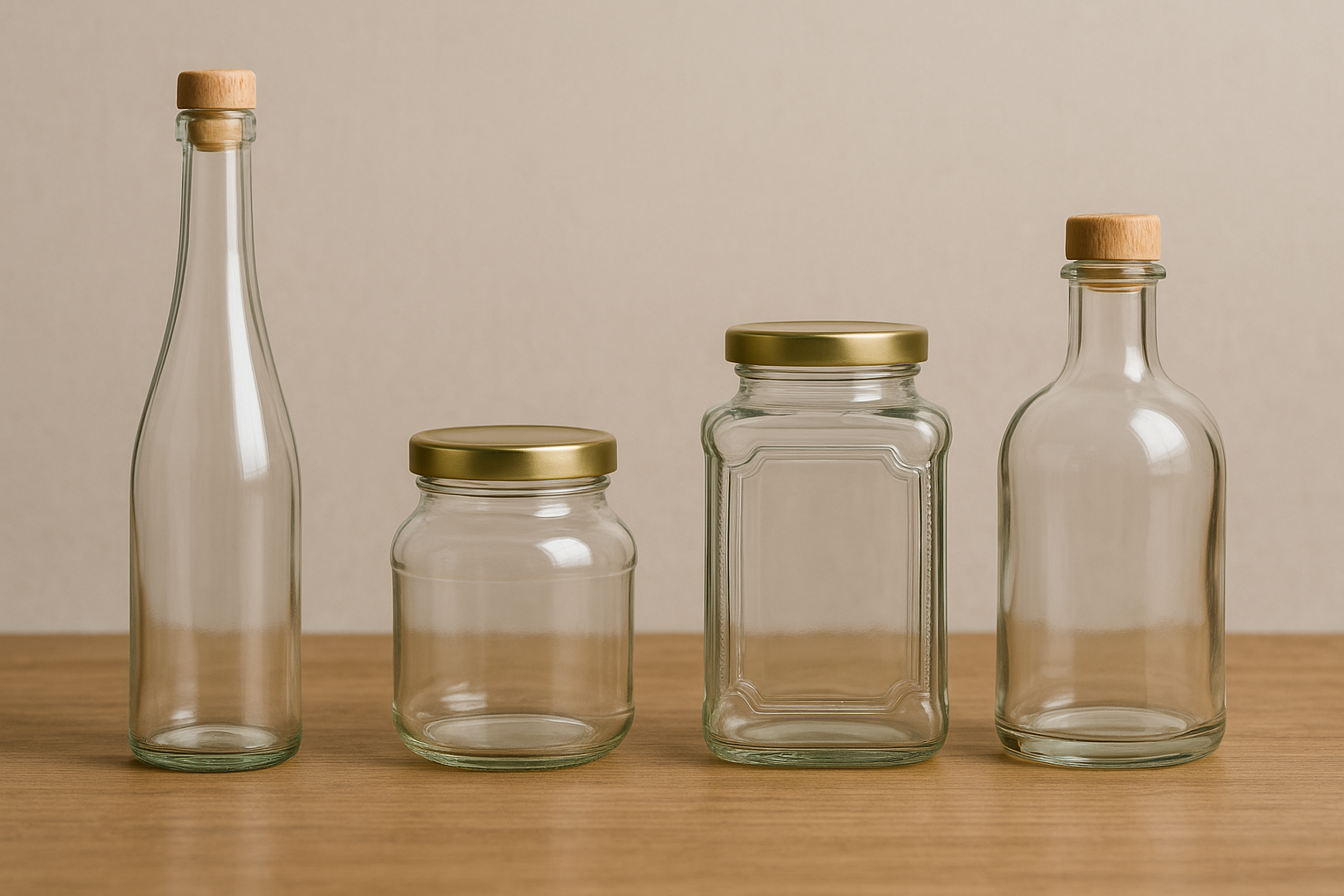
Shelf Presence and Recognizability
Shape not only affects aesthetic appeal but also defines how a product stands out at retail. A uniquely designed glass bottle creates a strong shelf presence by visually breaking away from uniform lines of products. Consumers are more likely to notice and remember a bottle that stands tall, curves differently, or features textured surfaces.
In the premium food and beverage space, recognizability is as important as initial impact. Signature shapes become extensions of brand identity. Whether it’s a slender gin bottle or a broad honey jar, a consistent silhouette across SKUs enhances brand recall, helping repeat customers spot the product instantly even in crowded aisles.
Case Study: Absolut Vodka
Absolut’s short-neck, apothecary-style glass bottle has become iconic. The brand achieved global recognition not just through flavor but through packaging consistency. The shape offered a distinct silhouette that stood out on crowded shelves and aligned with Absolut’s “heritage meets modernity” brand narrative.
Closures: The Finishing Touch That Signals Premium Quality
Closures are often overlooked in the food and beverage industry, but they hold symbolic and practical significance. A closure represents hygiene, safety, style, and closure integrity.
Common closures used in glass bottles across food and beverage categories include:
- Metal Lug Caps – Widely used in sauces and jams for their reliability.
- Natural Corks and Wooden Stoppers – Common in wines, oils, and infused drinks.
- Swing-top Flip Closures – Often seen in kombuchas and fermented beverages for their vintage vibe.
- Sleek Aluminum Screw Caps – Gaining popularity in tonics, sodas, and gourmet cold brews.
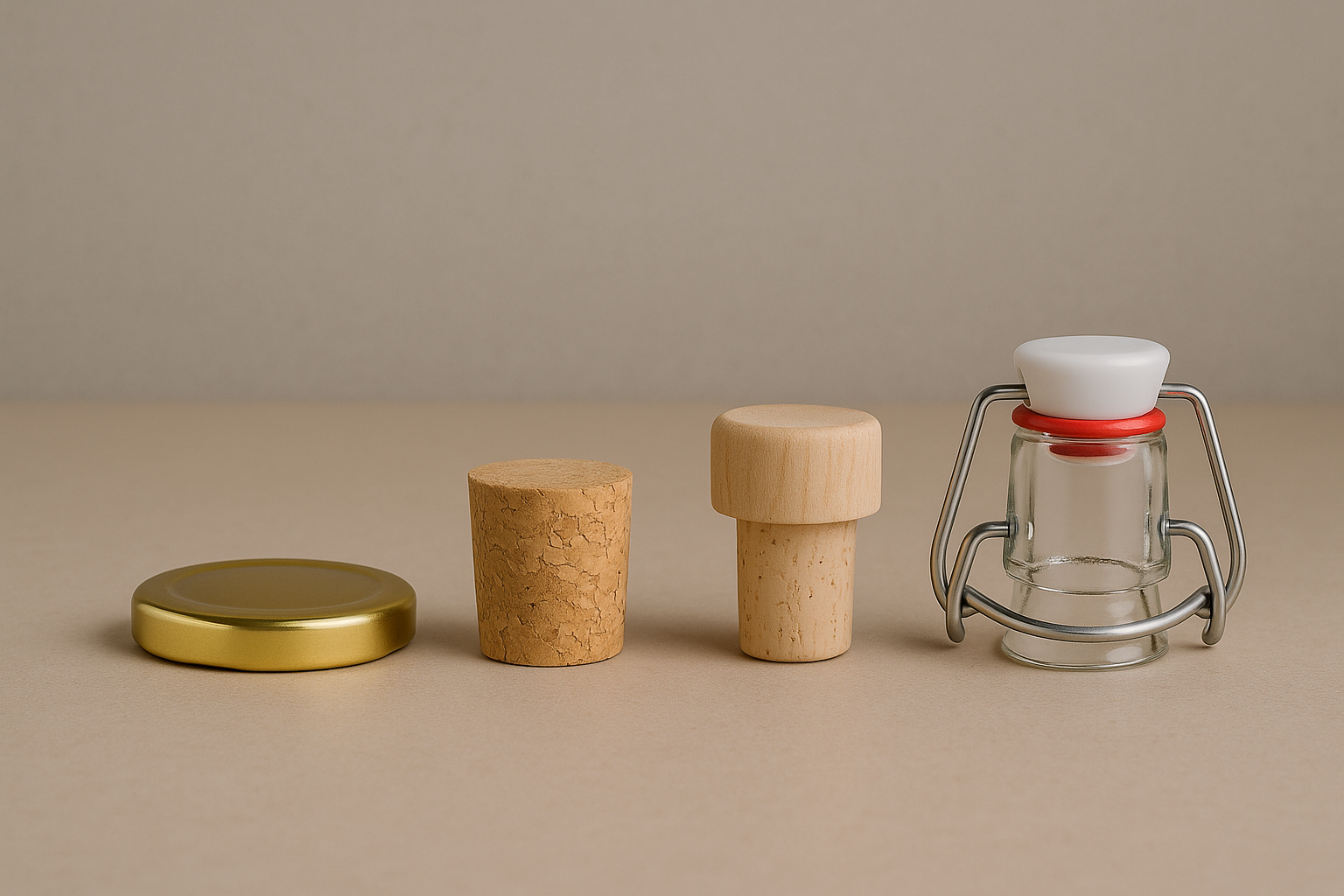
The Right Closure for the Right Experience
A mismatch between bottle design and closure can erode trust. For instance, an artisanal olive oil in a carefully crafted glass bottle sealed with a cheap plastic cap would instantly feel inauthentic.
Case Study: Belazu Olive Oil
Belazu, a UK gourmet brand, introduced glass bottles for their high-end olive oil with real cork closures and reusable pour spouts. The elegant design and functional stopper not only enhanced the food and beverage experience but also aligned with their refillable bottle initiative. Return rates crossed 60%, thanks to the blend of premium packaging and sustainable values.
Integrating Glass Bottles into the Food and Beverage Service Industry
Food and beverage service providers from fine dining to casual cafes are increasingly adopting glass bottles and jars to elevate presentation and reinforce brand consistency.
Applications include:
- Cold brews and juices served in embossed, reusable glass
- Sauces and dips are provided in portion-sized, sealed jars
- Milk and smoothies are delivered in retro glass bottles for nostalgic appeal
Case Study: Blue Tokai Coffee Roasters
India’s Blue Tokai uses minimalistic glass bottles for its cold brews, coupled with black matte screw caps and printed labels. Customers often reuse the bottles, turning the packaging into a lifestyle accessory. This not only reduces packaging waste but also creates recurring brand impressions in homes and offices, a clever tactic in the food and beverage service market.
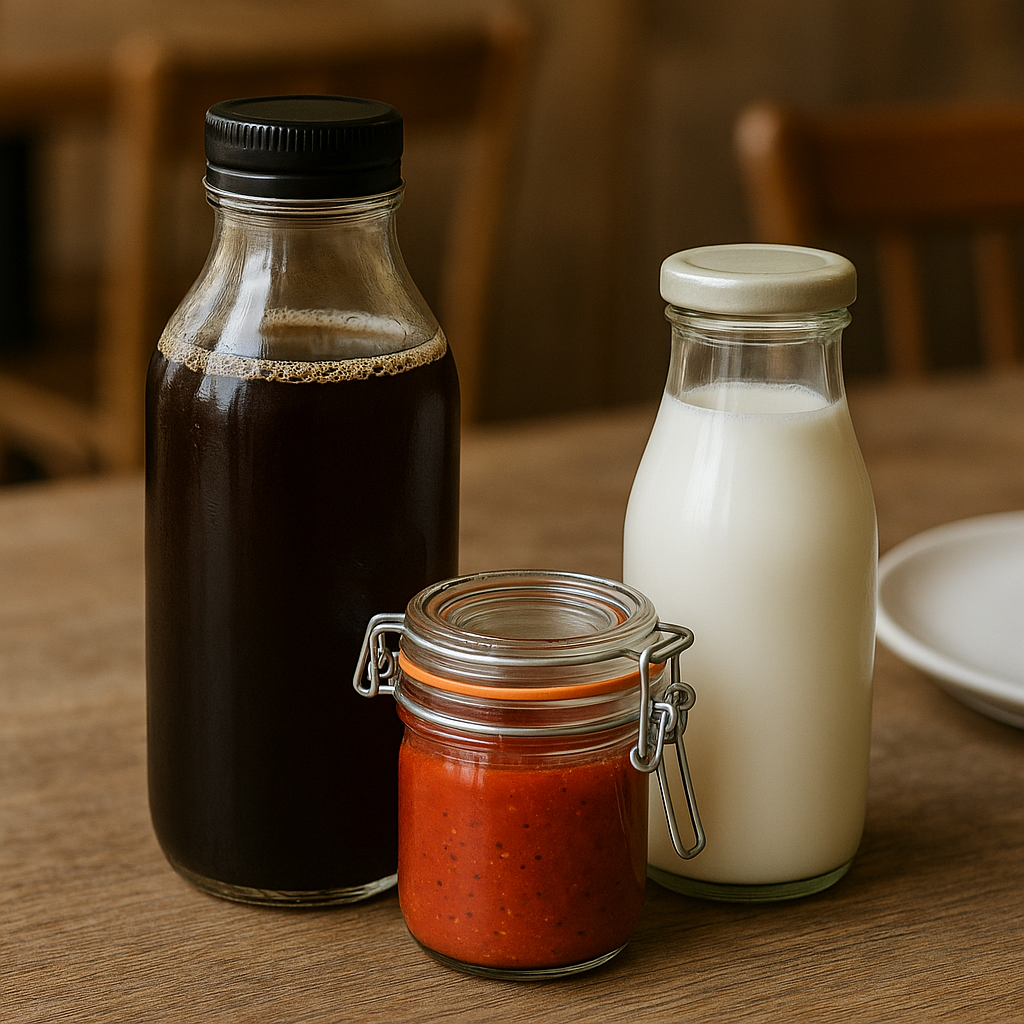
Customisation and Branding with Glass Bottles
For brand owners, customization is essential to stand out in the saturated food and beverage industry. Options include:
- Embossed branding: Logos and patterns embedded into the glass mold.
- Custom colors: Amber, green, and cobalt blue glass bottles for category distinction.
- Special closures: Textured caps, engraved corks, and unique threading.
- Shape modifications: From hourglass curves to square bases.
ROI of Custom Glass Packaging
Custom packaging creates strong brand recall, improves premium perception, and enhances gifting value. According to NielsenIQ (2023), 63% of shoppers say distinctive packaging influences their purchase decision in high-end food and beverage categories.
Balancing Premiumisation with Practicality
While glass bottles communicate luxury, they also demand strategic foresight in:
- Weight management: Heavier shipments may impact margins.
- Breakage risk: Custom shapes need proper cushioning and handling.
- MOQ and lead time: Unique molds have longer production cycles.
Brand owners should work with suppliers who offer flexibility, in-house decoration services, and inventory support to offset these challenges.
Hard Truth: Good Looks Alone Won’t Save a Bad Product
It’s essential to remember that while packaging plays a pivotal role in food and beverage premiumization, the product inside must match the promise. Packaging can secure a first sale, but quality ensures a repeat purchase.
Sustainability and Premium Packaging in Harmony
Premium today doesn’t just mean polished design; it means purpose. In the evolving food and beverage landscape, consumers increasingly expect packaging to be as responsible as it is refined. This is where glass bottles naturally shine.
Infinitely recyclable without any loss in quality, glass supports closed-loop manufacturing while preserving visual clarity and strength. Compared to plastic or metal, it’s also perceived as cleaner, safer, and more aligned with health-conscious products, a critical factor in premium food and beverage service environments.
Beyond recycling, glass bottles invite reusability. Whether repurposed for kitchen storage, DIY décor, or refills, they extend brand presence into homes and lifestyles, reinforcing loyalty. Minimalist labels, frosted textures, and embossed branding add a touch of elegance while aligning with eco-forward messaging.
Reusable for DIY, Storage, or Decorative Purposes
Beyond recyclability, the reusability of glass bottles extends a brand’s interaction with the customer long after the product is consumed. From cold brew containers repurposed as flower vases to olive oil bottles used for salad dressings or infused waters, glass packaging invites a second life.
This not only increases the perceived value of your food and beverage product but also encourages user-generated content and word-of-mouth marketing, as consumers proudly share their creative reuse stories online.
For food and beverage service providers, reusable glass jars and bottles also support refill models, takeaway programs, and return schemes, further embedding sustainability into the customer experience.
Common Mistakes to Avoid in Premium Glass Packaging
1. Choosing Style Over Function
This is one of the most typical traps, hardly taking into account usability over aesthetics. A beautiful glass bottle that is hard to hold, too heavy to use, or hard to pour out frustrates consumers immediately. In the case of premium products, whether the olive oil, juices, or syrups, the ease of utilization is equally important to the shelf appeal. The perceived value of the most brilliantly packaged product can be diminished by poor functionality.
2. Ignoring Closure Alignment
The closure is the last point of contact between your product and the end user. It has to have the same luxurious hand as the bottle. A cold brew that is that high-end in a sexy bottle that seals with a flimsy plastic cap creates cognitive dissonance, which erodes brand trust. Metal twist cap, wooden stopper, or tamper-evident seal; the closure needs to match the predominant aesthetics, sanitation quality, end application, and dispensing of the food and beverage product.
3. Underestimating Supply Chain Complexity
High-quality glass bottles sometimes demand custom-made molds, detailed molding processes, and extended lead time. Otherwise, brands will face a risk of delayed production and higher costs. That is because brands oversee Minimum Order Quantities (MOQs), mold development schedules, or decoration schedules. This is largely essential when engaging in seasonality launches, retail establishments, or dealing with food and drink goods that contain a shelf life.
4. Skipping the Sustainability Message
Consumers today are eager to feel good about their buys, and the same applies to the premium segment. The fact of using glass bottles itself conveys a message about sustainability, but brands need to tell people about it. Failure to emphasize recyclability, reuse potential, or low environmental impact is an opportunity loss. The importance of the brand (eco-conscious values), together with the appeal of the product, can be supported by QR codes, iconography, or brief taglines on the label.
5. Forgetting Food and Beverage Service Implications
Designing for the shelf is not the same as designing for food and beverage service environments. Glass packaging that is too bulky, fragile, or complex may not be practical for cafes, restaurants, or takeout counters. Consider storage efficiency, stackability, and ease of refill or reuse. If the packaging cannot transition smoothly between retail and service models, brands risk losing opportunities across key sales channels.
Future Trends in Premium Food and Beverage Packaging
As the food and beverage industry continues to evolve, so too does the packaging that defines its premium tier. Modern consumers are not just looking for beautiful design; they’re seeking meaning, ethics, and innovation behind the aesthetics. For brands looking to future-proof their premium offerings, understanding these emerging packaging trends is essential.
Sustainability Meets Luxury
The intersection of eco-consciousness and premium appeal is no longer niche; it’s the new norm. Forward-thinking food and beverage brands are reimagining luxury not as excess, but as conscious elegance. This means selecting materials and finishes that are as environmentally responsible as they are visually stunning.
Recycled glass bottles are becoming a staple, offering the same pristine clarity and strength as virgin glass but with significantly reduced carbon footprints. Coupled with biodegradable closures made from plant-based resins or sustainably harvested wood, brands are proving that eco can indeed be upscale.
In premium food and beverage service environments such as boutique cafes, mixology bars, or gourmet restaurants, presenting products in recycled glass bottles with eco-designed caps enhances the brand narrative. It tells customers, “We care about the planet without compromising your experience.”
The sweet spot lies in achieving both ecological responsibility and visual sophistication. Think frosted, embossed bottles made from post-consumer recycled glass, paired with minimal, laser-etched labels. This is where green meets glamorous—offering a packaging solution that aligns with both planetary and prestige values.
The Rise of Minimalist Premium Design
In today’s cluttered visual landscape, minimalism is emerging as the most impactful form of premiumisation. Consumers equate simplicity with transparency, trust, and intentionality, values that are critical in the modern food and beverage purchase decision.
Clean lines, geometric shapes, and matte finishes on glass bottles are increasingly favored over overly ornate designs. Brands are stripping away the unnecessary to highlight what truly matters: purity, quality, and authenticity.
Typography, too, plays a critical role. Sleek sans-serifs are replacing serif fonts, while embossed type or UV-printed logos create tactile contrast without visual noise. The label isn’t just a space for branding anymore; it becomes part of the aesthetic experience.
In the food and beverage service space, this minimalist trend enables better visual harmony on countertops and tables. A clear cold brew bottle with a subtle monogrammed seal or a honey jar with a muted pastel lid doesn’t shout, it whispers sophistication.
Moreover, transparent messaging, both literal and figurative, is becoming essential. Consumers want to see the product and understand the process. QR codes linking to origin stories, production methods, or reuse tips are now part of the design language of trust.
Looking Ahead
These future-forward trends in premium food and beverage packaging aren’t fleeting; they represent a long-term cultural shift. Brands that embrace recyclable materials, minimalist elegance, and honest storytelling will not only stand out but also build lasting loyalty in an increasingly values-driven marketplace.
Ajanta Bottle: Packaging That Feels as Good as It Looks
At Ajanta Bottle, we believe every great fragrance deserves a bottle that captures its essence at first glance. With over four decades of packaging expertise, we help perfume brands turn their vision into packaging that speaks, sells, and stays memorable.
From color psychology consultation to premium decoration techniques such as gradient coating, frosting, UV printing, and embossing, we offer end-to-end solutions tailored to your scent, story, and strategy. Whether you’re creating a minimalist niche collection or launching a vibrant festive edition, our team will help you choose the right color palette, cap style, and finishing detail to ensure your product stands out—on the shelf and in the heart.
Your perfume is more than a product. It is a story, a memory, an emotion. Let us help you bottle that story beautifully.
Ready to transform your food and beverage packaging into a premium experience?
Connect with us:
● Email at sales@ajantabottle.com
● Phone/Whatsapp: +91 9891098918
You can also shop from more than 500+ packaging solutions on www.ajantabottle.com – India’s first ever comprehensive packaging e-commerce portal.
For additional information, browse through our blog at https://www.ajantabottle.com/blog/ or subscribe to our latest updates through our social media channels,
*YouTube channel: https://www.youtube.com/c/Ajantabottle
*LinkedIn Page: https://www.linkedin.com/company/ajantabottle
*Facebook Page: https://www.facebook.com/glassbottleindia
*Instagram Page: https://www.instagram.com/ajantabottle
*Google Business Profile Manager: https://g.page/r/CXTH9MKpe2DuEBM/review

